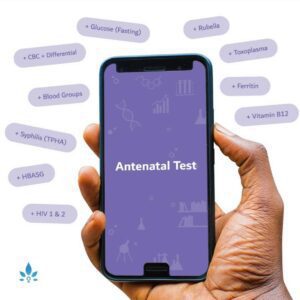Is Pregnancy Linked to Developing Cervical Cancer?


Pregnancy linked to developing cervical cancer, The Lancet is one of the most widely read and well regarded medical journals and, as a result, work that gets published within it is generally considered to be high quality and scientifically robust. In 2002, the Lancet published the results of a study looking at the effects of parity (the number of times a woman has been pregnant and carried the baby to a viable gestational age) on cervical cancer rates. This followed work from the late 1980s and early 1990s that suggested that women who had been pregnant multiple times were more susceptible to cervical cancer.
The findings published in the Lancet revealed that for HPV-positive women there was a direct association between number of full-term pregnancies and risk of developing cervical cancer.
This supported earlier work that stated that the risk of cervical cancer was more than 2-fold higher in women who had four or more children, compared to those who had none or one.
There are a few key points to note:
- The women at greatest risk are those who experience persistent HPV infection. High parity seems to act as a cofactor, interacting with HPV to induce cervical carcinoma. The relative risk is much lower in women who are HPV-negative.
- There is no evidence that high parity increases the risk of HPV infection.
- The association is only seen with pregnancies classed as full-term. It is, therefore, likely, that the events triggering carcinoma progression happen during the second or third trimester, or even during delivery. It has been suggested that women who deliver vaginally are at a slightly higher risk than those who have a caesarean section, however, this data is limited and the theory requires further validation.
- Other factors may confound, or exacerbate the effect; for example, it has been suggested that prolonged oral contraceptive use might have a multiplicative effect, increasing the risk further in women who are multiparous.
Not all studies have identified a positive link; some do not find a significant association and others only find a link between high parity and certain types of cervical carcinoma. Some of the studies fail to consider whether a female has undergone frequent pap screening, or how many previous partners she has had. The biggest risk factor for the development of HPV is having multiple sexual partners. This data appears sound, even though the reported values are likely to be an under-estimation, due to an unwillingness of women to disclose this type of information.
Biological mechanism
There are plausible mechanisms for an involvement of pregnancy in the transition of normal cervical cells into cancerous lesions. High risk HPV infection is implicated in almost all cases of cervical cancer. However, not all women with HPV go on to develop cancer. It is thought that the high levels of oestrogen and progesterone present throughout pregnancy, but particularly high in the last few weeks, cause cellular transformations on the surface of the cervix that last many years. This can cause prolonged exposure of the transformation zone in the cervix to HPV and increase the likelihood of persistent infection and progression to cancer. Another consideration is that the immunosuppression that is a natural part of pregnancy, can enhance the role of HPV in cervical carcinogenesis.
One important theory proposed by the authors of the aforementioned Lancet study, is that smaller family sizes might explain, in part, why there has been a global decline in cervical cancer mortality and incidence. This decline is considered to be mainly due to an increased awareness of pap screening as well as the advent of the hugely effective HPV vaccine; however, in countries where screening rates are low and the vaccine has not yet been introduced, a reduction in parity rates may provide an explanation.
Nabta is reshaping women’s healthcare. We support women with their personal health journeys, from everyday wellbeing to the uniquely female experiences of fertility, pregnancy, and menopause.
Get in touch if you have any questions about this article or any aspect of women’s health. We’re here for you.
Sources:
- Brinton, Louise A., et al. “Parity As A Risk Factor For Cervical Cancer.” American Journal of Epidemiology, vol. 130, no. 3, Sept. 1989, pp. 486–496., doi:10.1093/oxfordjournals.aje.a115362.
- Jensen, K E, et al. “Parity as a Cofactor for High-Grade Cervical Disease among Women with Persistent Human Papillomavirus Infection: a 13-Year Follow-Up.” British Journal of Cancer, vol. 108, no. 1, 15 Jan. 2013, pp. 234–239., doi:10.1038/bjc.2012.513.
- Kasamatsu, Elena, et al. “Factors Associated with High-Risk Human Papillomavirus Infection and High-Grade Cervical Neoplasia: A Population-Based Study in Paraguay.” Plos One, vol. 14, no. 6, 27 June 2019, doi:10.1371/journal.pone.0218016.
- Muñoz, Nubia, et al. “Role of Parity and Human Papillomavirus in Cervical Cancer: the IARC Multicentric Case-Control Study.” The Lancet, vol. 359, no. 9312, 30 Mar. 2002, pp. 1093–1101., doi:10.1016/s0140-6736(02)08151-5.
- Roura, Esther, et al. “The Influence of Hormonal Factors on the Risk of Developing Cervical Cancer and Pre-Cancer: Results from the EPIC Cohort.” Plos One, vol. 11, no. 1, 25 Jan. 2016, doi:10.1371/journal.pone.0147029.
- Russo, Evandro, et al. “Vaginal Delivery and Low Immunity Are Strongly Associated With High-Grade Cervical Intraepithelial Neoplasia in a High-Risk Population.” Journal of Lower Genital Tract Disease, vol. 15, no. 3, July 2011, pp. 195–199., doi:10.1097/lgt.0b013e31820918ea.
- Trottier, Helen, et al. “Risk of Human Papillomavirus (HPV) Infection and Cervical Neoplasia after Pregnancy.” BMC Pregnancy and Childbirth, vol. 15, no. 1, 7 Oct. 2015, doi:10.1186/s12884-015-0675-0.













































